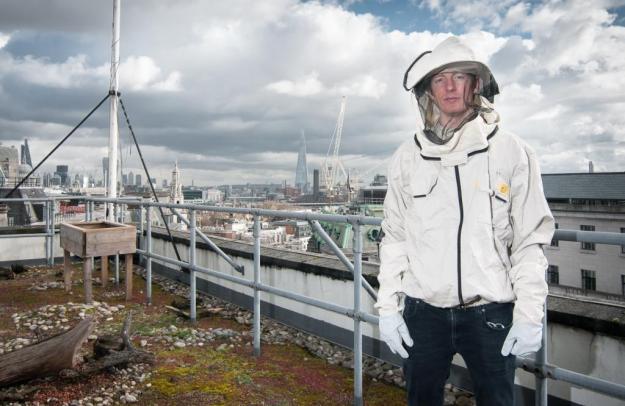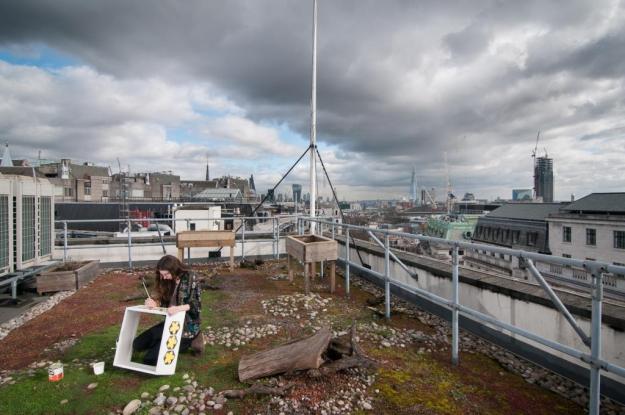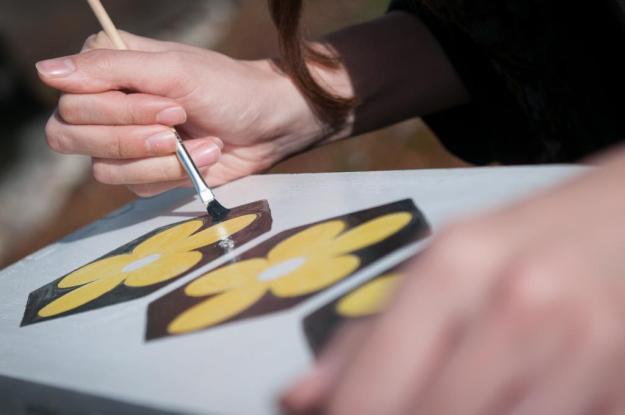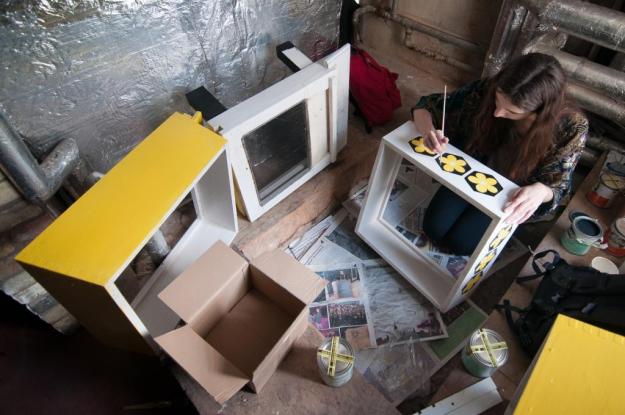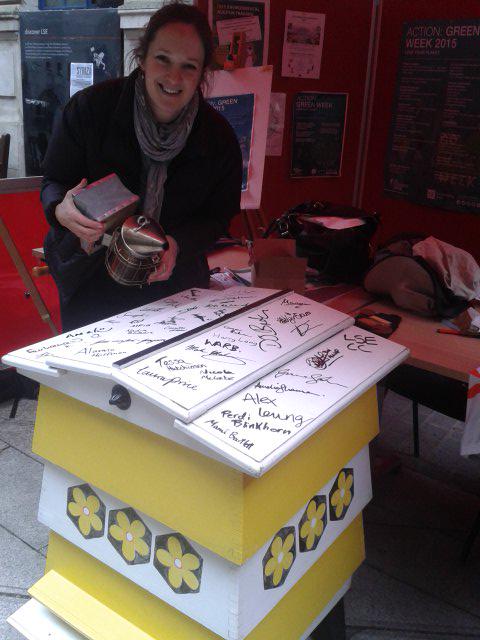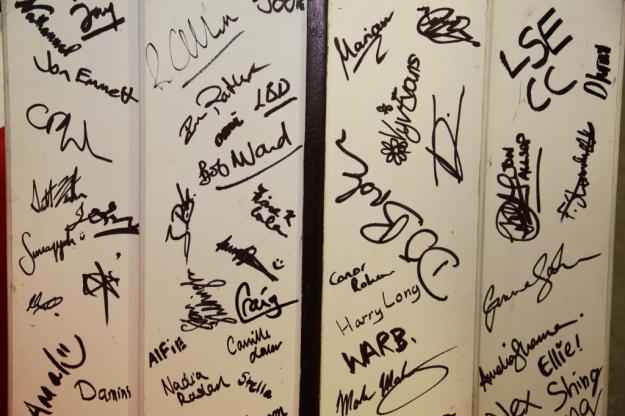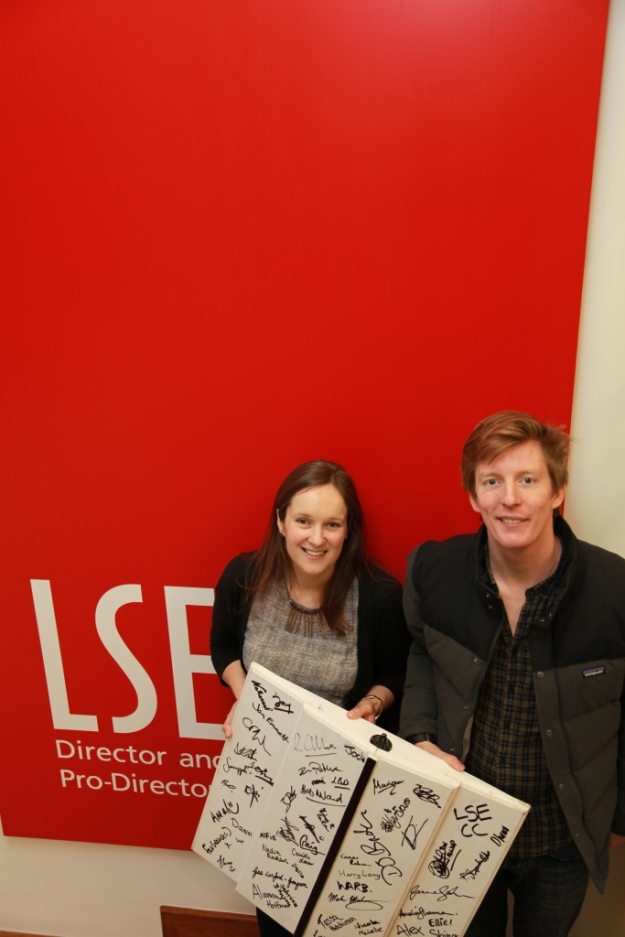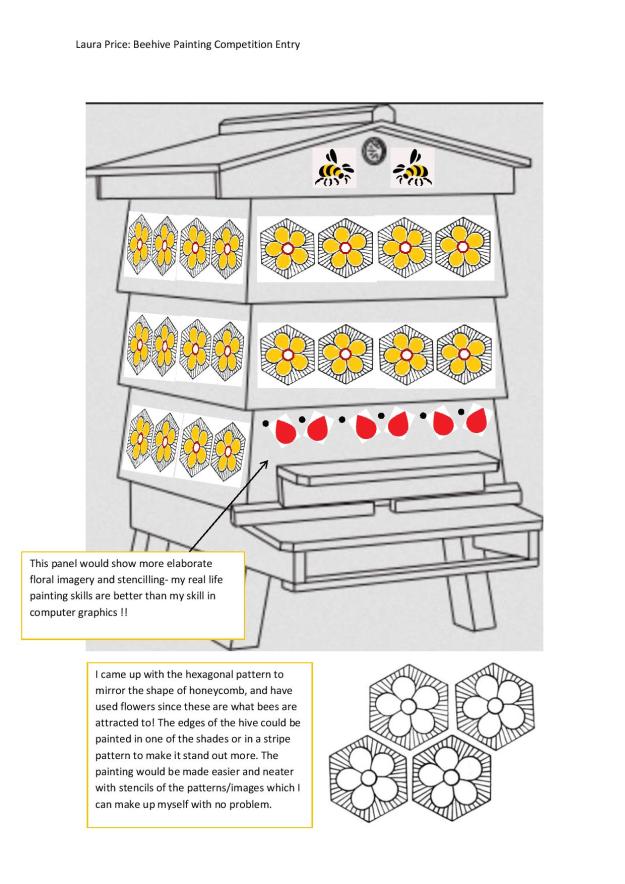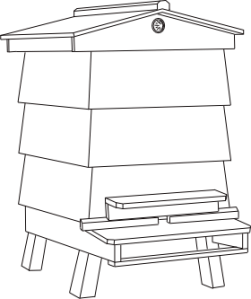We’re really excited about the fact that one of our beehives is going to be painted as part of LSE’s Green Week in February 2015. Looking at some of these beautiful hives has provided some great inspiration!
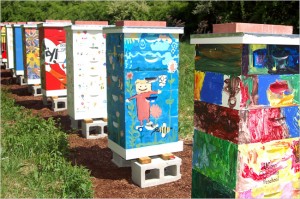
Beehives at the University of Connecticut

Beehive at the University of California, Davis
But what kind of things do you need to consider when painting a beehive? Having just lost one of our hives to colony collapse disorder, we’re already particularly sensitive to the type of paint we’re going to put on the hive, but what about colour choices, and which parts of the hive should we not paint?
So, heading to the trusty interweb, we found all sorts of information. Firstly, that when considering what colour to paint the hive, you must remember that dark colours will keep the hive warm, whereas light colours will keep the hive cool. So, it’s probably not a good idea to paint the entire thing black as it might get a bit too much like a sauna in there over summer!
You can also only paint the outside of the hive – remembering that a beehive is basically a food container that makes sense! Here’s a useful diagram showing which parts to paint and which parts not to paint:
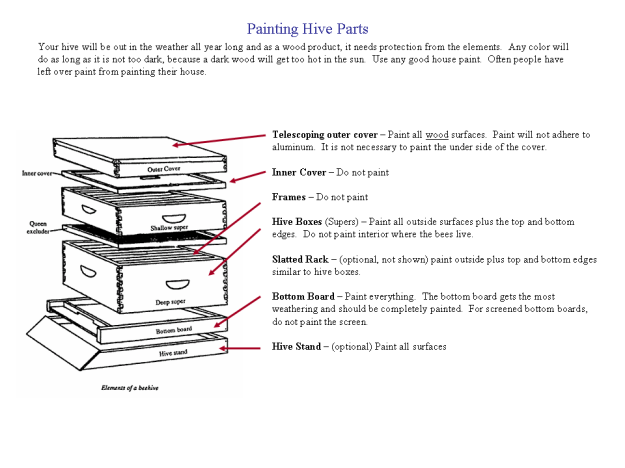
c/o Essex County Beekeepers
Satin paint (so it doesn’t attract as much dirt as a rougher paint) and low-chemical paint (i.e. with the lowest levels of volatile organic compounds possible) are also recommended.
So, we’ve got a bit of planning to do in terms of which paints we use and what designs might be best. Watch this space!
